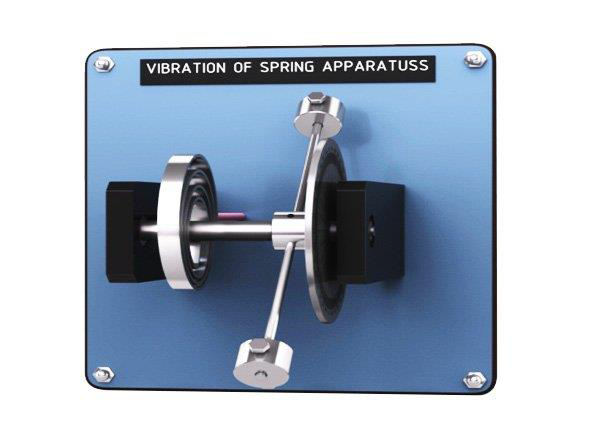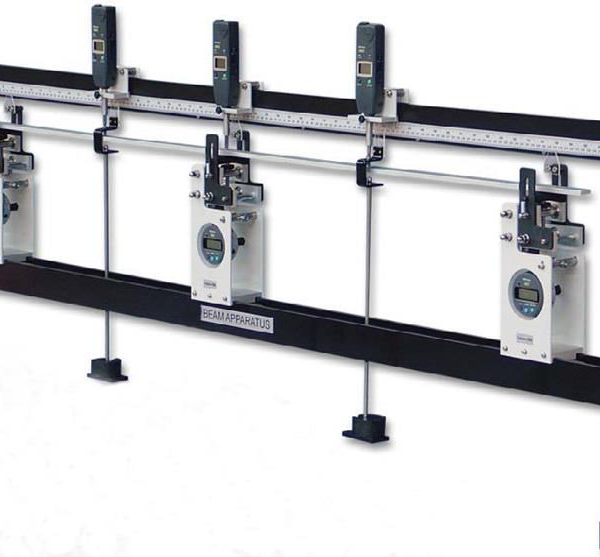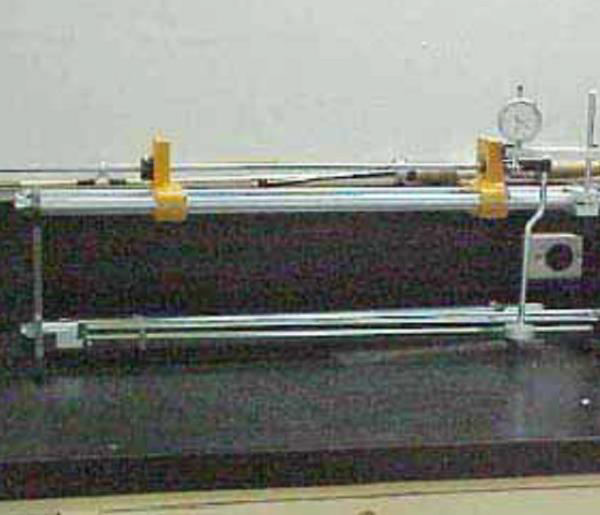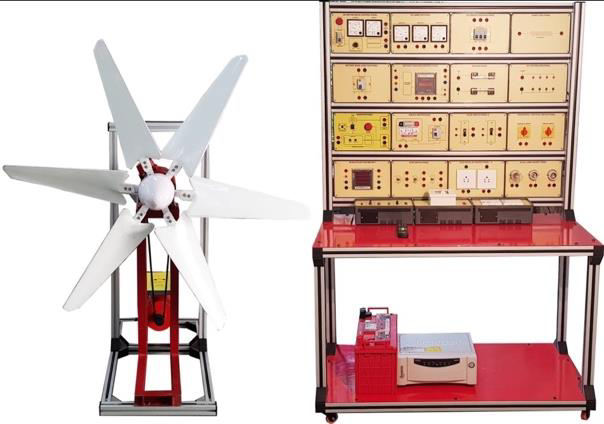Vibrations of Spiral Spring Apparatus Model MT 134
Sci-tech Vibrations of a Spiral Spring Apparatus Model MT 134 has been designed to study and understand a coil torsion spring, a mass-spring system and the fundamental properties of its characteristic periodic motion. In this sense, the unit consists of a rigid plate equipped with anchorage points where a rotating horizontal shaft is supported. A graduated disc to read the rotated angle; a lever joined to the shaft, where masses are located at different distance, and a coil torsion spring, attached to the shaft by one end and to the rigid plate by the other end, are arranged on the shaft. Displacing the system a specific angle, the spring will exert a recovery force (torque) proportional to the stiffness of the spring due to the elastic deformation experienced. This parameter is one of the characteristic aspects of the spring and is known as spring constant “k”. On the other hand, locating the weights symmetrically in the arms of the lever a mass-spring system is generated. When that system is displaced a certain angle from its equilibrium position, it will describe a periodic motion characterized by its vibration frequency. Thus, it is possible to analyze the influence of the masses and their positions on the normal frequency of the resulting simple harmonic motion. Besides, the unit can be directly fixed to the wall if desired.
Current energy requirements need to transform techniques from effective to efficient in the generation, transport and consumption of energy. These needs have promoted new developments in the energy field, among them the energy storage systems. Progress in materials engineering suggest the possibility of a storage based on the elastic deformation of springs. For that purpose, the methodology of this type of systems must be studied in depth, as well as the possible ways to optimize its characteristics. A spring is a device able to experience reversible elastic deformations, allowing the storage of energy by external forces and releasing that energy when removing the forces that generate that strain. This type of elements can be made of different materials, such as metal alloys or plastics, enabling their use in a wide range of industrial, mechanical and even domestic applications. In general, they are used in situations where a force is applied to return as energy, so they are designed to offer resistance or dampen the external forces. There are three types of springs depending on the forces they can withstand: Tension springs. They withstand tension forces, as its name implies. They are characterized by a hook in each end. Compression springs. They are designed to withstand compression forces. They can be cylindrical, conical, hourglass, etc. Torsion springs. They are springs subjected to torsion forces (torques). There is a type of spring that combines the previous features since as they are tightened when wound up around an axis (as a torsion spring), they actually work under bending forces (as tension and compression springs).
Sci-tech Vibrations of a Spiral Spring Apparatus Model MT 134 is designed to study the characteristic parameters of a spring, specifically torsion in helical springs. The unit is supplied with the material required to study a coil spring or the mass-spring system forming a torsion pendulum in different configurations, allowing the modification of relevant variables of the system, such as the torque applied, the total moment of inertia, the amplitude of the harmonic motion and its frequency.
Sci-tech Vibrations of a Spiral Spring Apparatus Model MT 134 has been designed to study and understand a coil torsion spring, a mass-spring system and the fundamental properties of its characteristic periodic motion. In this sense, the unit consists of a rigid plate equipped with anchorage points where a rotating horizontal shaft is supported. A graduated disc to read the rotated angle; a lever joined to the shaft, where masses are located at different distance, and a coil torsion spring, attached to the shaft by one end and to the rigid plate by the other end, are arranged on the shaft. Displacing the system a specific angle, the spring will exert a recovery force (torque) proportional to the stiffness of the spring due to the elastic deformation experienced. This parameter is one of the characteristic aspects of the spring and is known as spring constant “k”. On the other hand, locating the weights symmetrically in the arms of the lever a mass-spring system is generated. When that system is displaced a certain angle from its equilibrium position, it will describe a periodic motion characterized by its vibration frequency. Thus, it is possible to analyze the influence of the masses and their positions on the normal frequency of the resulting simple harmonic motion. Besides, the unit can be directly fixed to the wall if desired.
- Bench-top unit with adjustable legs.
- Anodized aluminum structure and panels in painted steel.
- The unit mainly consists of: Coil spring: Material: hardened steel.
- Section: 8 x 0.5 mm. Øint: 18 mm. Øext: 57 mm.
- Lever with movable weights for the coil spring deflection: Material: stainless steel.
- Adjustable distance from the center of gravity of the weight to the rotation axis: 42 – 150 mm.
- Two movable weights made of stainless steel of 0.5 Kg.
- Goniometer to read the deflection angle: Range: 0 – 360 º. Resolution: 1 º.
- Chronometer to measure the vibration period.
- Optional Sci-Cal DAQ
- Determination of the spring constant “k” of a coil torsion spring by Hooke’s law (static method).
- Experimental determination of the natural frequency of vibration of a spring-mass system.
- Determination of the spring constant “k” of a coil torsion spring by the dynamic method.
- Influence of the mass distribution on the natural frequency of vibration of a spring-mass system









